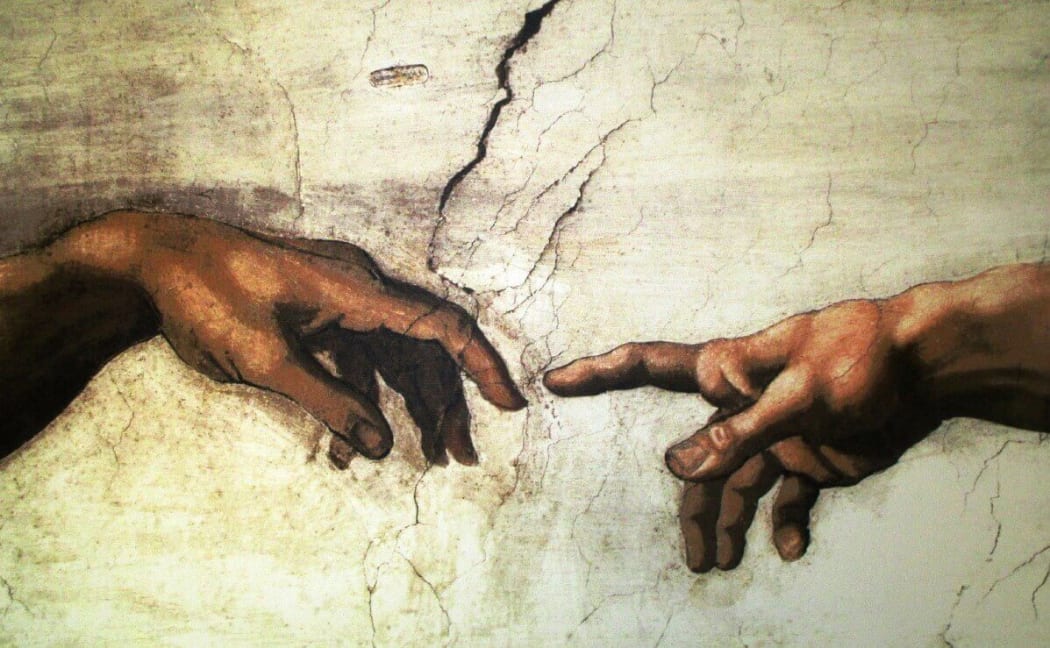Handsome, muscly with a penchant for the fantastic and the monstrous. This is not description of a Hollywood heartthrob, but the Christian God from the Bible according to biblical scholar and broadcaster, Dr Francesca Stavrakopoulou.
She paints a portrait of a God from head to toe who laughs, eats, sleeps and explains why the image of God has shaped Western culture and ideas in her book God: An Anatomy.

Photo: Michelangelo, Public domain, via Wikimedia Commons
Stavrakopoulou tells Jesse Mulligan she’s a not a believer but has always been fascinated by religion.
“I’m half Greek and half British and I wasn’t brought up in a religious way at all but religion always intrigued me and I couldn’t understand why the gods and goddesses of ancient Greek mythology hadn’t survived into the modern day and yet this ancient God of the Bible was still being worshipped.
“This was a God who had a son who, from what I could see as a kid, was half divine and half human like ancient Greek and Roman heroes of the past and I couldn’t work out what gave this religion its longevity. I got bitten by the bug as a kid and it stayed with me really.”
Stavrakopoulou says whether we’re Jewish, Christian, or non-believers, the Bible has informed our ideas about God and his status.
“The Bible is almost like a cultural icon for a lot of modern cultures today whether we believe in what it says or not and I think it’s important that we set the bible in its ancient, cultural context.”
She says lessons from the Bible need to be contextualised to a vastly different culture to our own.
“Their idea of God and what good behaviour is and what we do with our bodies and who we do it with was very different. I wanted to tell a story about this very ancient collection of texts and this very ancient deity and describe how that idea of God has changed over thousands of years.”
The book begins with God’s earliest worshippers who very much believed he had a body and was hyper masculine.
“Aggressively so, this was the violent deity. Not just in the Old Testament but the New Testament as well. This image of God changes over time, so the book almost traces this cultural history of the deity in his first 3000 years.”
Stavrakopoulou says it wasn’t until around 400 AD when Christianity had taken root in the Roman Empire and became the religion of the west that God began to lose his body in the religious imagination.
“It was because of a philosophical preference to separate and value the immaterial and spiritual over the body and the base. That’s the God of modern Christianity.”
She says God’s image has changed as cultural preferences and tastes have changed and he’s truly been created in man’s image rather than the other way around.
“We still tend to do that today, we project our own preferences onto these imagined beings and we still do that.”
Stavrakopoulou believes modern Christians should return to the idea of God as having a very physical body and embrace our own bodies.
“I would welcome Christians embracing the very robust physicality of their God in the Bible to remind us that, actually, bodies do matter, not just in the heavenly world but here and now and what we do with our bodies does matter.
“Despite all his bad points and, believe me there are a lot of bad points about this deity in the Bible, there are some really exciting, comforting aspects to his characterisation and bodily portrayal. He’s as complex as the rest of us.”

